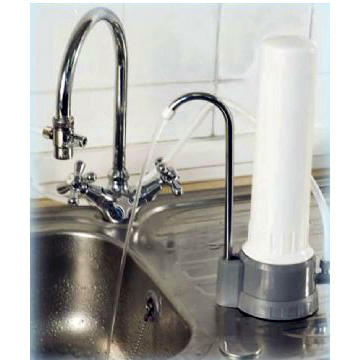Chlorine taste and/or smell in drinking water — very few people enjoy it. In fact, of all the complaints we hear most from customers of city/municipal water suppliers, it tops the list darn near every time.
“For the last 8 years we lived in the country and had our own well and some pretty good tasting water. Recently we had to move (regrettably!) closer to our jobs in order to save on gas and so the kids could go to better schools. We THOUGHT the water would taste better since it got treated by the city where we moved but it tastes something awful like pool water only worse. Is that normal and can we do anything about it? Hoping for good news ! Thanks!”
The above inquiry came from ‘Diane’ and to answer her questions directly, “Maybe & Yes!”
By law public water systems must treat water for unwanted biological contaminants and for the most part pretty much all of them use some form of chlorine as part of their disinfection process. Also by law, water may not leave their facilities containing more than 4 ppm (parts per million) free and/or total chlorine.
Want more information on the difference between free and total chlorine? Take a look at an earlier article entitled Free Chlorine, Combined Chlorine and Total Chlorine.
Getting back to Diane’s question, though, a water supply could very well contain under the allowed level of free and/or total chlorine — and still smell and taste really bad.
Getting rid of chlorine taste and smell
For most folks removing the chlorine taste and odor from their drinking water begins and ends with the installation of a Granular Activated Carbon (GAC) filter as a countertop water filter, faucet filter, undersink water filter, or whole house water filtration device.
For others, however, the reduction and/or removal of chlorine taste and odor requires the installation of a granular activated carbon water filter as well as a more sophisticated water filter like a reverse osmosis water filter that more or less strips EVERYthing out of water… and for that level of filtration one typically will need to spend a few extra dollars.
Two main types of chlorine to test for?
In order to determine which water filter will best address your chlorine in drinking water reduction/removal needs you will first need to determine whether your water supplier uses free chlorine or chloramines as its main disinfectant. For that task we have found that the WaterWorks 2 Free & Total Chlorine Test Strips works quite well since it tests for both free and total chlorine at the same time.
Upon completion of testing, simply subtract the free chlorine reading from the total chlorine reading to get the chloramine concentration. If you obtain a value the same as, or very close to, the total concentration (i.e. the free chlorine test pad reads zero) then your water supplier more than likely uses a process known as chloramination as it primary disinfecting method — and you will need a more sophisticated filtration system to get rid of the chlorine taste and odor.






